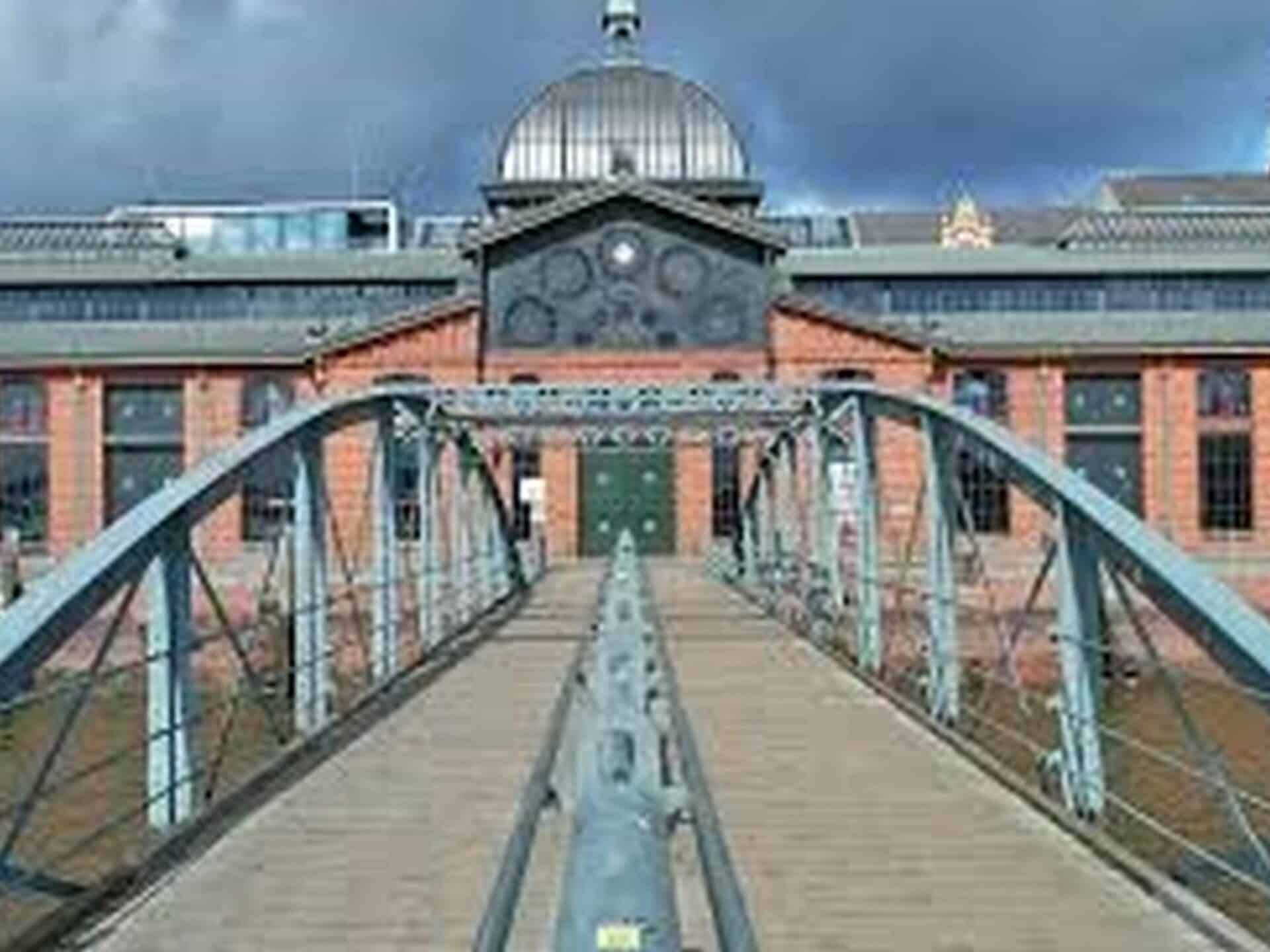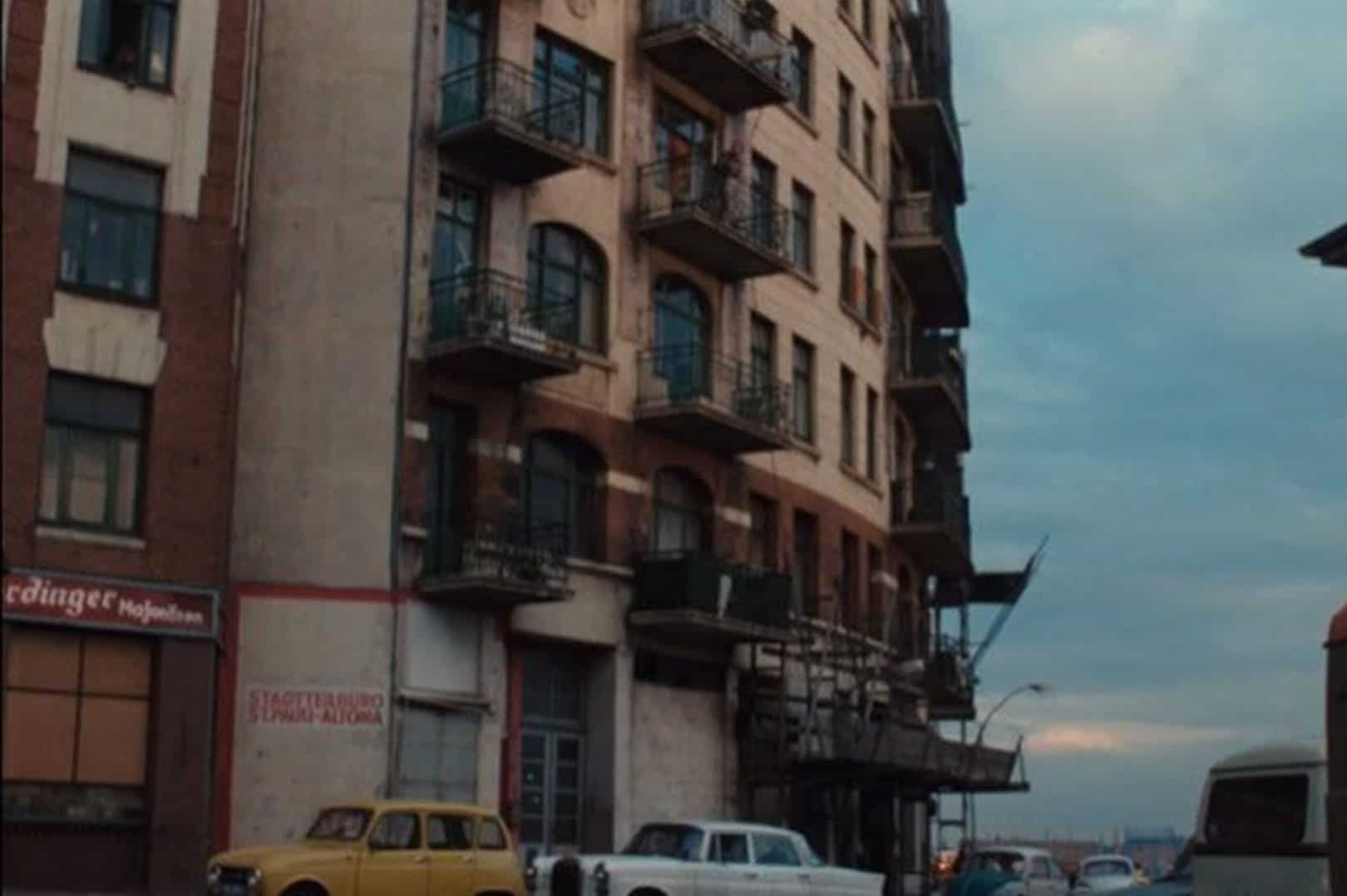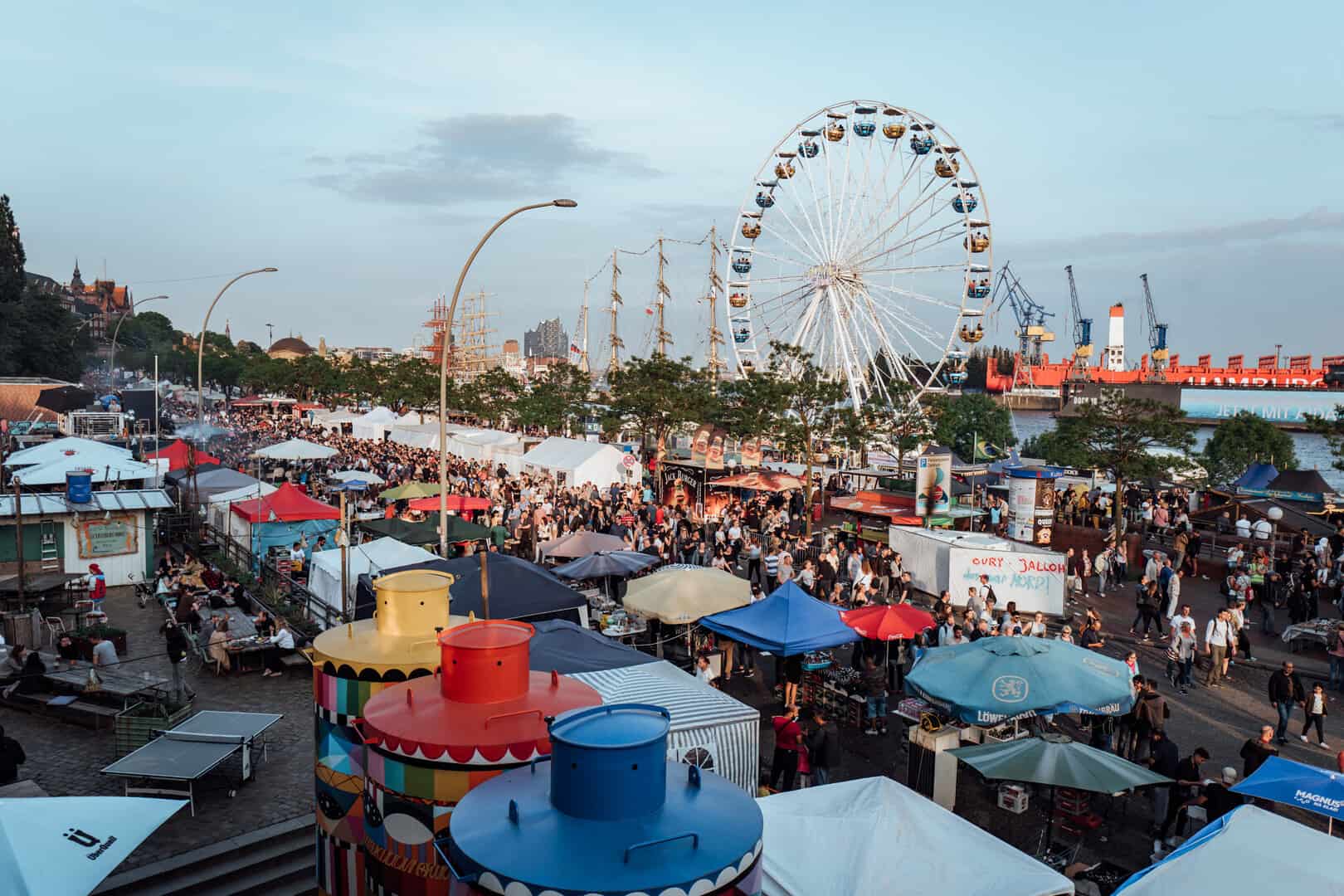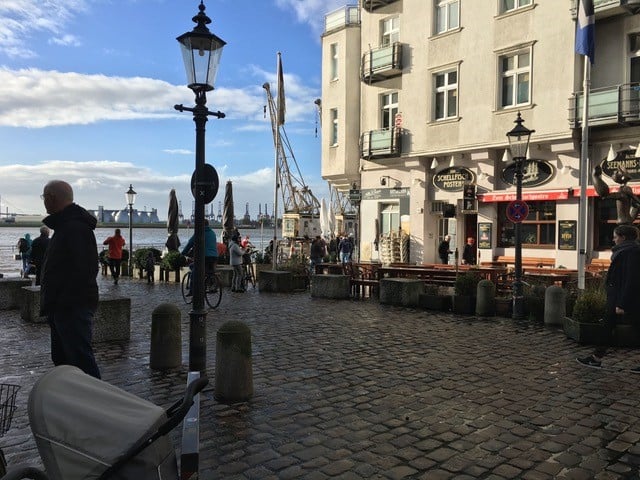See the Hamburg fish market
![]()
It wasn’t until 1934 that there was a single Hamburg fish market. Altona, at the gates of Hamburg, had its own fish market until then. Between the Hamburg and Altona fish market, there was a centuries-long rivalry. Today, the fish market attracts many early risers and tourists every Sunday morning. In 1900, sculptor Paul Türpe created the Stuhlmann fountain in front of the Altona railway station. He depicts the rivalry allegorically as a fight of two centaurs for a fish.
From the fish auction hall to Schellfischposten
Altona fish auction hall
The original fish auction hall of 1895/96 was built long and narrow, 103mx22m for different use. It was to have rooms for auctions, storage of equipment, and packing and shipping of fish. Nets were to be mended here, and there was also some accommodation for traveling merchants.
The fish auction hall is a steel and glass structure, which allows a lot of light into the rooms through numerous windows that also served as ventilation.
During the war, the hall was badly damaged. From 1982-84, the fish auction hall was restored after long discussions and has since been a popular venue.
The Hamburgers, on the other hand, built their first fish auction hall on St Pauli in Hafenstraße as early as 1871. The hall was inconveniently located. The fish had to be carried down slippery steps. The coal steamers from England docked nearby. The often blowing west wind sometimes showered the fish with coal dust.
In 1898 a new large hall was built of iron lattice and brick. Already in 1906 this hall had become too small. From 1915 on, the Altona and Hamburg fishermen wanted a common fish market, however it took until 1934 to unite the two markets.
The Hamburg fish auction hall was completely demolished in 1971/72.
.
Hamburg fish market then and now
Not only fish, but also fruit, vegetables, plants and live small animals, such as chickens, carrier pigeons and rabbits were and are sold on the Altona fish market to supply the citizens.
In order to keep the fresh fish from spoiling, it was allowed to be sold on Sundays before going to church. Traditionally and until today, the fish market begins at 5.00 o’clock in the morning in the summer and at 6.00 o’clock in the winter. At 10.00 o’clock it’s all over.
Here is where night owls and tourists meet on Sunday morning, and all those who are looking for especially fresh fish for the Sunday breakfast .
There are some popular market screamers, who advertise their eels (Aal-Dieter), bananas and plants and give the customers the feelingto get a lot of goods for little money, sometimes almost for free.
If you are looking for beautiful bouquets of flowers, good fish and fruit at low prices, you will find them here only after 9.30 o’clock, when then really everything must go “out”.
A detour to the old fish auction hall is always worthwhile. For the morning pint/brunch bands play a loud, colorful program and maybe you can find a place to warm up, because it can be quite chilly on the fish market on Sunday mornin.
.
Hamburg fish market as a film set
The fish market and the surrounding area have been immortalized in many films and series. If you want to see what the fish market and its surroundings would have looked like 30 years ago, take a look at Wim Wenders’ “American friend”. Or, even better: in the film “Taxi” based on the book by Karin Duve, the Hamburg fish market steals the show from the actors all the time, day and night. The fish market is also present in the detective series “Großstadtrevier” and “Hamburg Hafenkante”. Hamburg is attractive as a filming location for many national and international filmmakers, not only because of the scenery, but also because they don’t have to pay to use the public spaces. The “Filmförderung Hamburg Schleswig-Holstein” (FFHSH) supports film and television productions of all genres, the main thing is that they are shot in Hamburg. And so Hamburg and the fish market can often be seen in films.
Fish market and harbor birthday
The fish market and Hamburg Harbour Birthday at the beginning of May are inextricably linked. Watching the arrival and departure parade of ships from the fish market directly on the waterfront is particularly impressive. You are right in the centre of the hustle and bustle.
Every year, more than 300 ships from all over the world and of all ages and construction methods sail to the largest harbour festival in the world.
It is a special experience to board a ship at the fish market itself and take part in the parade. You spend almost a whole day on the Elbe and meet small sailing ships that have their home port in Hamburg, right up to large sailing ships such as the Alexander von Humboldt II, the advertising ship for Beck’s beer. In the past, the Russian four-masted barque Kruzenshtern, once a sister ship of the “Peking” under the name “Padua” and built on a Hamburg shipyard, used to be among the guests.
The cruise shipping companies make sure that one or two cruise ships can be there.
Old fashioned freighters, fireboats, lightships, barges and barge tugs are not missing either. A dense, coordinated crowd on the Elbe.
Many of the ships are moored in the traditional ship harbour or in the Övelgönne museum harbour and can be viewed there.
The fish market and the storm surge
In some years, the fish market is flooded more than once by a storm surge. Between October and March, the Elbe can burst its banks during stormy weather. The fish auction hall and all the buildings around it are appropriately secured against the flood. Flood gates are closed, bulkheads to basements and garages are closed, and parked cars are moved to safety.
On most houses, you can see marks indicating how high the flood rose in which year. The current highest water level due to a storm surge that occurred was in 1976. Climate change is unfortunately making itself felt – or rather, it is already a reality. In the last couple of years, the Fish Market was more “under water” often and higher by storm surges than still in the last century.
and after visiting the fish market in Hamburg...
…one walks a bit further along the “Große Elbstraße” to end up on a Frühschoppen with a Heringsbrötchen at “Schellfischposten” or “Haifischbar”.
The Schellfischposten is one of the oldest Seefahrerkneipe (Sailor’s pub) in Hamburg. The taproom is tiny and used to be the waiting shelter for workers going to the fish market. The word Schellfischposten reminds of the Schellfischbahn (Haddock train) that transported fish up from the port to Altona station nearby.
Today you can rent the pub for private parties. If not just the NDR late night show “Inas Nacht” is recorded or a celebration takes place, it is a quaint old pub. Under the ceiling there are numerous souvenirs hanging, brought by sailors from all over the world.
In summer, you can sit well in front of the door and watch the business on the Elbe and on the shore.
The Haifischbar (shark bar) just around the corner has borrowed its name from the entertainment show “Haifischbar”. For this purpose, the NDR television studio was transformed into the typical setting of a Hamburg harbor bar. Oh yes, this show ran from 1962-1979.
The Haifischbar itself is larger than the Schellfischposten, just as old and also decorated with a lot of maritime flair.
.
All about "Greets"
- Duration: two to three hours and absolutely free
- Max. 6 people, no combination of different requests
- Meeting point and exact route: by agreement between guest and Greeter
- Request: please at least two weeks before desired date
- More about Greets






